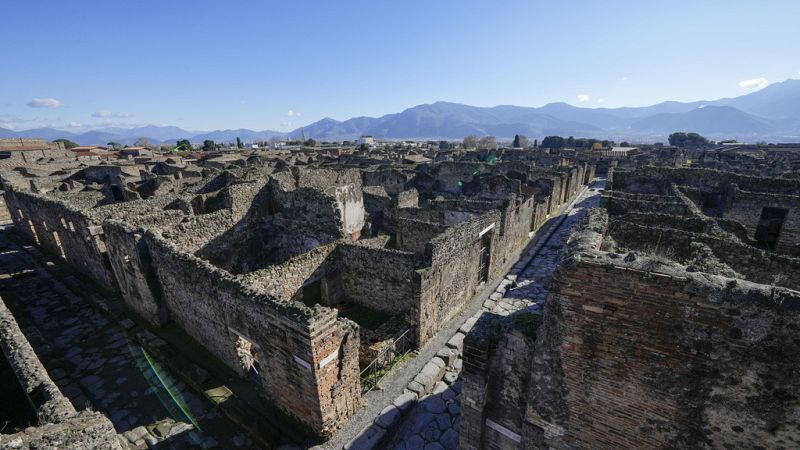
Over one hundred years following the discovery of the extensive wall painting in the Villa of the Mysteries, another similar ancient artwork has been unearthed in Pompeii, an ancient Roman city located in Italy.
A nearly life-sized mural has been created, stretching along three walls of the room. The series of paintings reveals the secrets of Bacchus, the Roman equivalent of Dionysus, a ancient Greek deity associated with wine, fertility, theater, and spiritual frenzy.
Dating back to between 40 and 30 BC, the frescoes, as stated by scientists, showcase followers of Bacchus, known as bacchantes, depicted as dancers, hunters with a slain goat or sword, and young satyrs with pointed ears playing the flute or making offerings.
At the center of the scene is a woman accompanied by an elderly man holding a torch, representing a young mortal participating in a nighttime ritual to uncover the secrets of Dionysus. All the figures are depicted standing on pedestals.
"The scene we're seeing is actually an initiation ritual into the mysteries of Dionysus. In ancient times, there were several secret cults not only dedicated to Dionysus, but also to Demeter and Isis," said Gabriel Zuchtriegel, the director of the archaeological park.
Archaeologists in Pompeii recently uncovered one of the city's largest private spa complexes, adjacent to a grand banquet hall in the Regio IX district.
This remarkable discovery, found in Insula 10, provides a unique insight into how wealthy Romans combined leisure, art, and political goals within their residences.
The ancient Roman city of Pompeii is located near present-day Naples in Italy. It is famously known for being destroyed and buried beneath a thick layer of volcanic ash and pumice when Mount Vesuvius erupted in 79 AD.
A UNESCO World Heritage site and Italy's second most-visited tourist attraction, after the Colosseum, Pompeii occupies an area of approximately 22 hectares, with about one-third still covered by ash, awaiting excavation.
